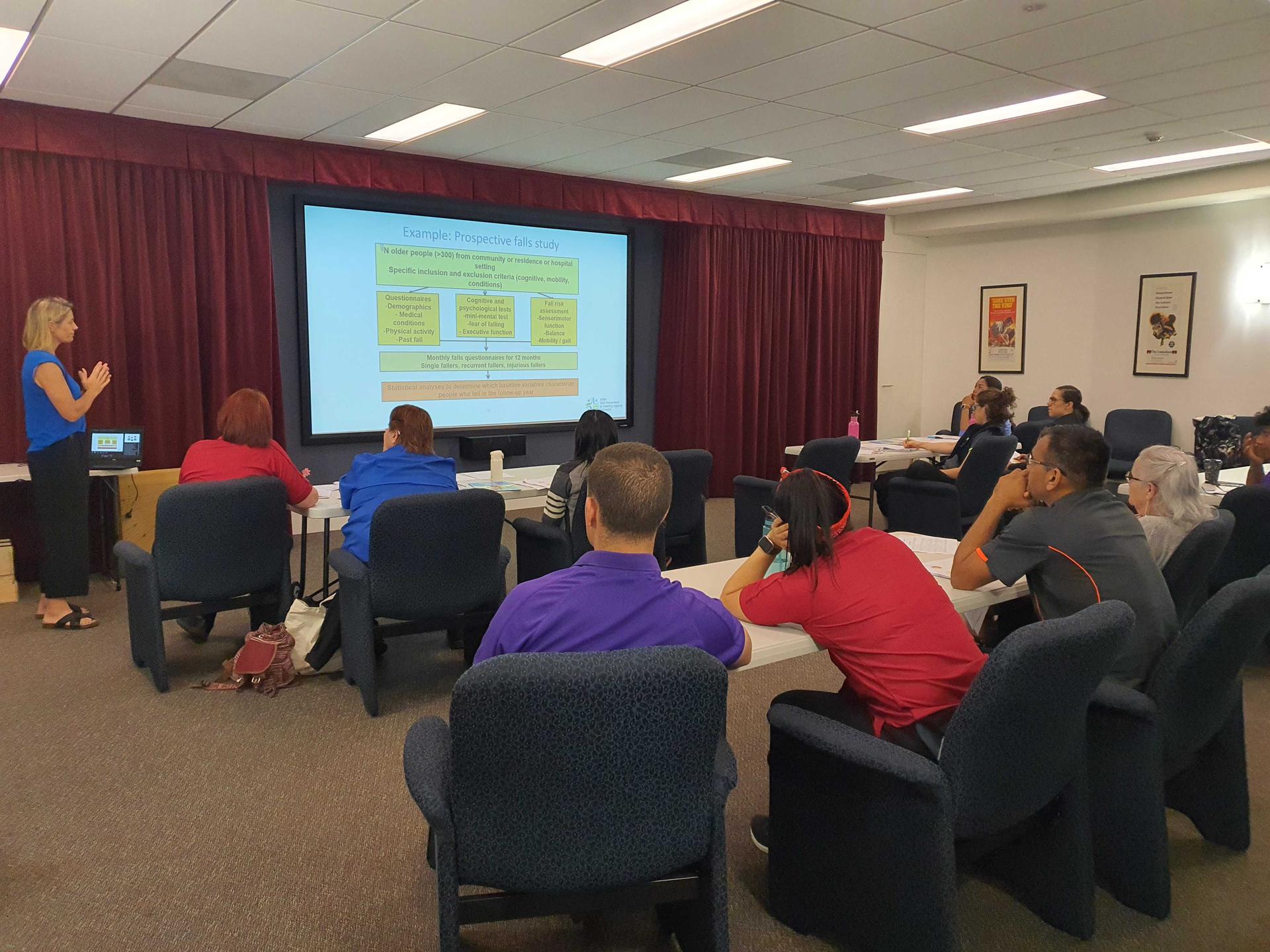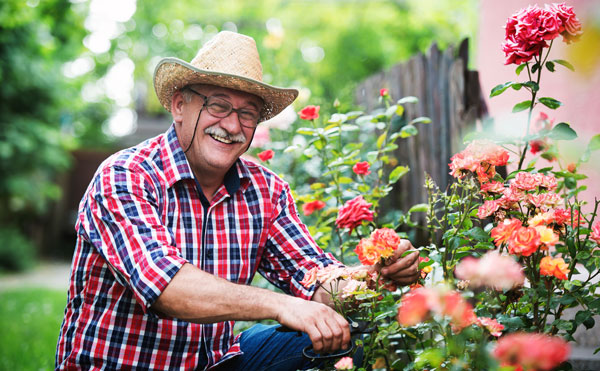Falls Links
December 2020 | Issue 6
Welcome to our newsletter
Upcoming Events
NSW Fall Prevention and Healthy Ageing Network Launch Webinar
Friday 11th December 12.30pm - 1.30pm AEDT
Join us as we celebrate the launch of the NSW Fall Prevention and Healthy Ageing Network.
Formerly known as the NSW Falls Prevention Network we have refocused our purpose to preventing falls and fall-related injury within a broader scope of healthy ageing. This webinar will provide an introduction on the partnership between the NSW Fall Prevention and Healthy Ageing Network and the Clinical Excellence Commision (CEC), an overview of the new direction of the Network, our vision and purpose, the reveal of our new logo and a demonstration of our new website and E-learning platform.
Presenters
- Dr Harvey Lander Director, Systems Improvement, CEC
An introduction on the partnership between the NSW Fall Prevention and Healthy Ageing Network and the CEC - Professor Stephen Lord, Senior Principal Research Fellow; Centre Director, Falls Balance
and Injury Research Centre, NeuRA
Overview of the new direction of the Network - Professor John Beard, UNSW
The World Health Organisation's recent thinking on the idea of healthy ageing - Professor Cathie Sherrington, Senior Principal Research Fellow; Institute for Musculoskeletal Health, University of Sydney
Fall prevention into the future
|
|
Australian & New Zealand Falls Prevention Society
Pain, Balance and Falls In Older Adults
Wednesday 9th December 1.30pm - 2.30pm AEDT
|
|
Institute for Musculoskeletal Health & Australian & New Zealand Falls Prevention Society
The Research Power Hour: Professor Sallie Lamb
Thursday 17th December 8.00am - 9.00am AEDT
|
|
Latest Mini-review
Overview of A Randomised Trial of a Multifactorial Strategy to Prevent Serious Fall Injuries (Bhasin et al, N Engl J Med 2020; 383:129-140)
Cameron Hicks, NeuRA
The Strategies to Reduce Injuries and Develop Confidence in Elders (STRIDE) is a cluster-randomised trial to determine the clinical effectiveness of a patient-centred intervention in primary care settings on serious fall injuries in older people. It implemented an evidence-based, multifactorial, individually tailored intervention led by specially trained nurses in primary care settings on serious fall injuries in people aged 70+ years. This overview summarises the characteristics of the trial, the intervention and it's implementation, the main findigs as well as the authors thoughts from the paper as to why the trial was not effective.
|
|
Program Highlight
The NSW Fall Prevention and Healthy Ageing Network recently conducted a workshop for preventing falls in older adults at Goodwin Retirement Village.

Preventing Falls in Older Adults Workshop
The workshop was attended by 16 staff members consisting of registered nurses, physiotherapists, physiotherapist assitants, exercise physiologists, occupational therapists and leisure and lifestyle staff members.
This workshop provided an opportunity for staff to learn about the latest evidence in fall prevention including risk factors and interventions to prevent falls. It also included time for discussion on how the care facility could provide further training for staff and safe exercise classes to residents as well as practical sessions in order to accomplish this.
The feedback for the event was very positive and will allow us to further develop this course into the future.
|
|
RESEARCH UPDATE
Screening and Intervention to Prevent Falls and Fractures in Older People
Lamb SE, Bruce J, Hossain A, Ji C, Longo R, Lall R, Bojke C, Hulme C, Withers E, Finnegan S, Sheridan R. New England journal of medicine. 2020 Nov 5;383(19):1848-59.
Abstract
BACKGROUND
Community screening and therapeutic prevention strategies may reduce the incidence of falls in older people. The effects of these measures on the incidence of fractures, the use of health resources, and health-related quality of life are unknown.
METHODS
In a pragmatic, three-group, cluster-randomized, controlled trial, we estimated the effect of advice sent by mail, risk screening for falls, and targeted interventions (multifactorial fall prevention or exercise for people at increased risk for falls) as compared with advice by mail only. The primary outcome was the rate of fractures per 100 person-years over 18 months. Secondary outcomes were falls, health-related quality of life, frailty, and a parallel economic evaluation.
RESULTS
We randomly selected 9803 persons 70 years of age or older from 63 general practices across England: 3223 were assigned to advice by mail alone, 3279 to falls-risk screening and targeted exercise in addition to advice by mail, and 3301 to falls-risk screening and targeted multifactorial fall prevention in addition to advice by mail. A falls-risk screening questionnaire was sent to persons assigned to the exercise and multifactorial fall-prevention groups. Completed screening questionnaires were returned by 2925 of the 3279 participants (89%) in the exercise group and by 2854 of the 3301 participants (87%) in the multifactorial fall-prevention group. Of the 5779 participants from both these groups who returned questionnaires, 2153 (37%) were considered to be at increased risk for falls and were invited to receive the intervention. Fracture data were available for 9802 of the 9803 participants. Screening and targeted intervention did not result in lower fracture rates; the rate ratio for fracture with exercise as compared with advice by mail was 1.20 (95% confidence interval [CI], 0.91 to 1.59), and the rate ratio with multifactorial fall prevention as compared with advice by mail was 1.30 (95% CI, 0.99 to 1.71). The exercise strategy was associated with small gains in health-related quality of life and the lowest overall costs. There were three adverse events (one episode of angina, one fall during a multifactorial fall-prevention assessment, and one hip fracture) during the trial period.
CONCLUSIONS
Advice by mail, screening for fall risk, and a targeted exercise or multifactorial intervention to prevent falls did not result in fewer fractures than advice by mail alone. (Funded by the National Institute of Health Research; ISRCTN number, ISRCTN71002650. opens in new tab.)
|
|
ABOUT US
Our vision is to lead the way in fall prevention and other healthy ageing initiatives by harnessing expert knowledge and being collaborative in all we do.
We work closely with researchers, policy makers, health practitioners and community service providers in the development and promotion of healthy ageing services and programs with a focus on preventing falls and fall-related injury.
Our purpose is to support practitioners to improve the lives of older Australians through healthy ageing initiatives with a focus on preventing falls and fall-related injuries.
SHARE YOUR NEWS
Do you have any news on Falls Prevention or healthy ageing that you want to share with others on the network, or report on a project that is happening in your area. We also welcome suggestions for articles and information you would like to see in this newsletter. Send your news and suggestions to: fallsnetwork@neura.edu.au


Contact Us:
Telephone +61 2 9399 1063
Email fallsnetwork@neura.edu.au
Our mailing address is:
NSW Falls Prevention Network
Neuroscience Research Australia
PO Box 1165
Randwick NSW 2031
Copyright © NSW Falls Prevention and Healthy Ageing Network
|
|